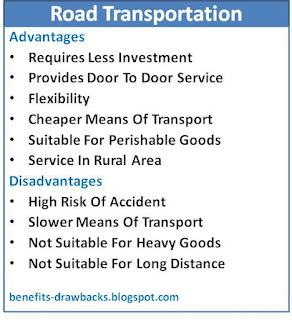Railway is important and most widely used means of transportation to carry people and heavy materials. Main advantages and disadvantages of railway transport can be described as follows:
Merits Or Advantages Or Benefits Of Rail Transport
1. Safe And Reliable
Rail transportation is least affected by adverse weather and there is lower chance of accidents and breakdown. So, it is safe and reliable mode of transport as compared to road transportation.
2. High Speed
Higher speed is another key benefit of railway transport. It ensures quick movement of passengers and goods because it is more faster than road and water transport.
3. Suitable For Bulky Items
Rail is suitable for transporting heavy and bulky items because of its large carrying capacity.
4. Cheaper Transport
Railway is economical than other forms of transportation. It is cheap and comfortable for carrying people and materials.
Railway transport is suitable for the movement of people and goods for long distance because of its cheapness and comfort.
6. Regular Service
Railways follow strict time schedule and fixed route to provide transport facility. So, it provides regular service as compared to other means of transport.
Demerits/Disadvantages Or Drawbacks Of Railway Transport
1. Lacks Door To Door Service
Railway transport cannot provide door to door service because of fix routes and stations.
Also Read:
2. Unsuitable For Short Distance
Railway is suitable for carrying heavy and bulky goods to the long distance. It is uneconomical to transport small loads over short distances.
3. Huge Investment
Railways need huge amount of investment because of high construction, operating, maintenance and overhead costs.
4. Lack Of Flexibility
Rail transport has fixed routes,stations and strict schedule. So, it is less flexible than other means of transport.
















